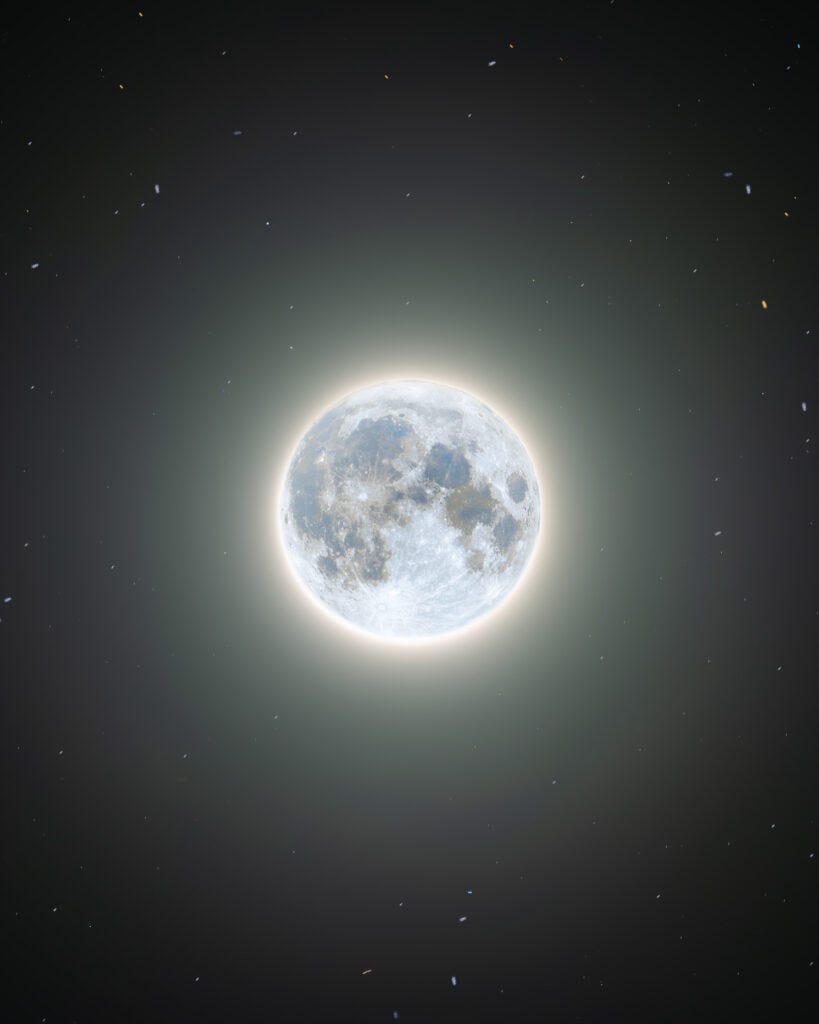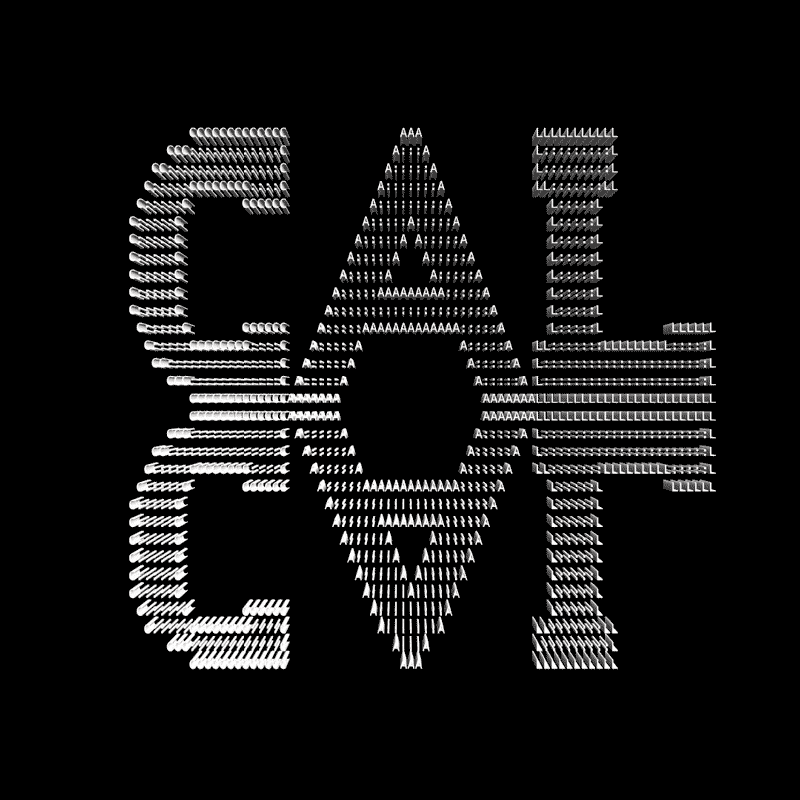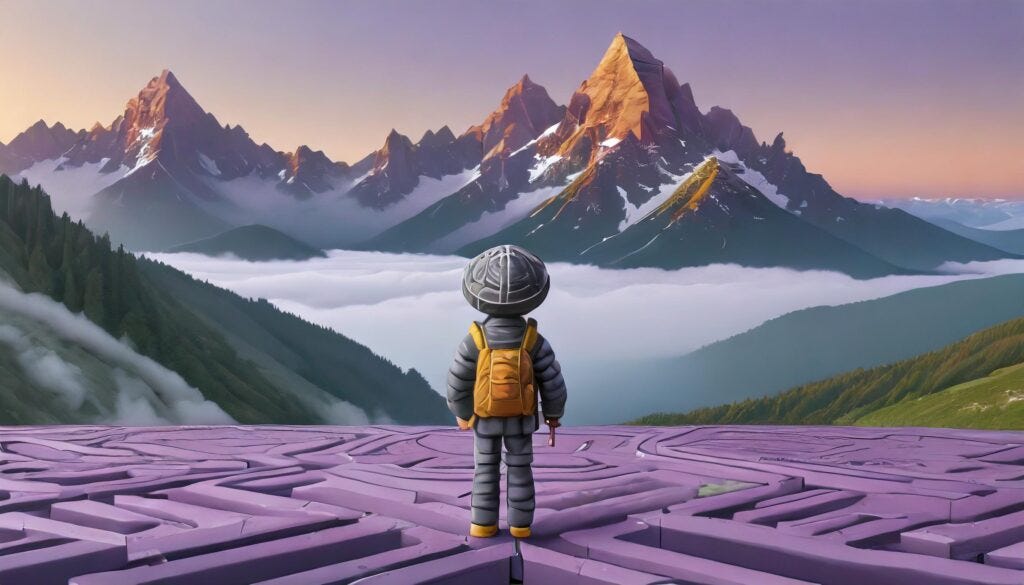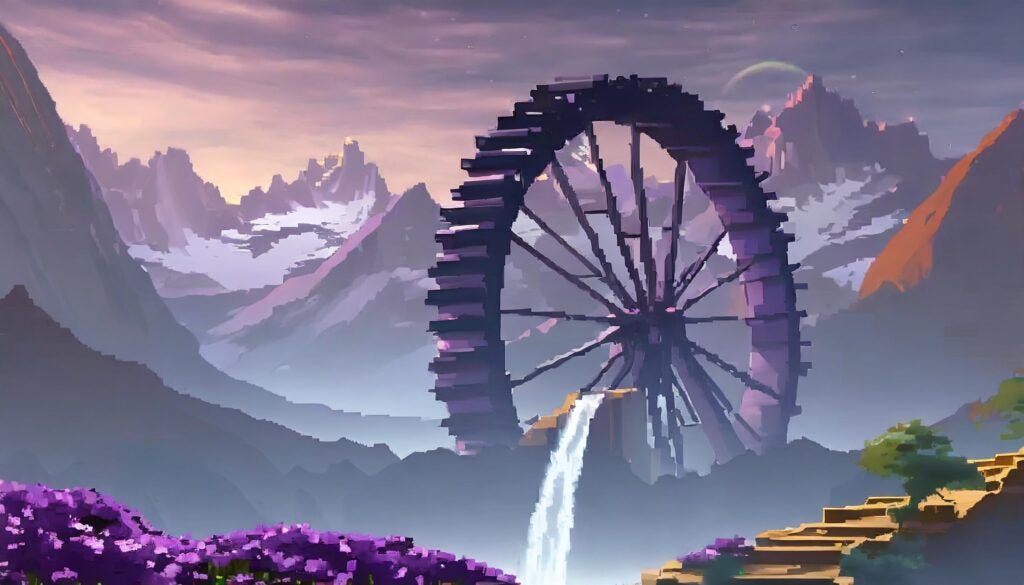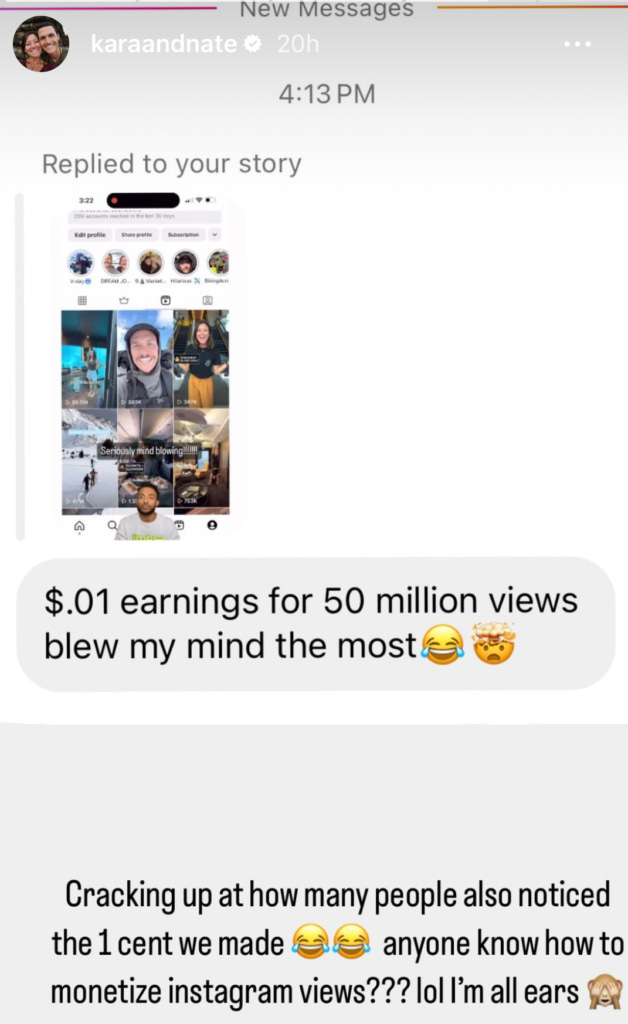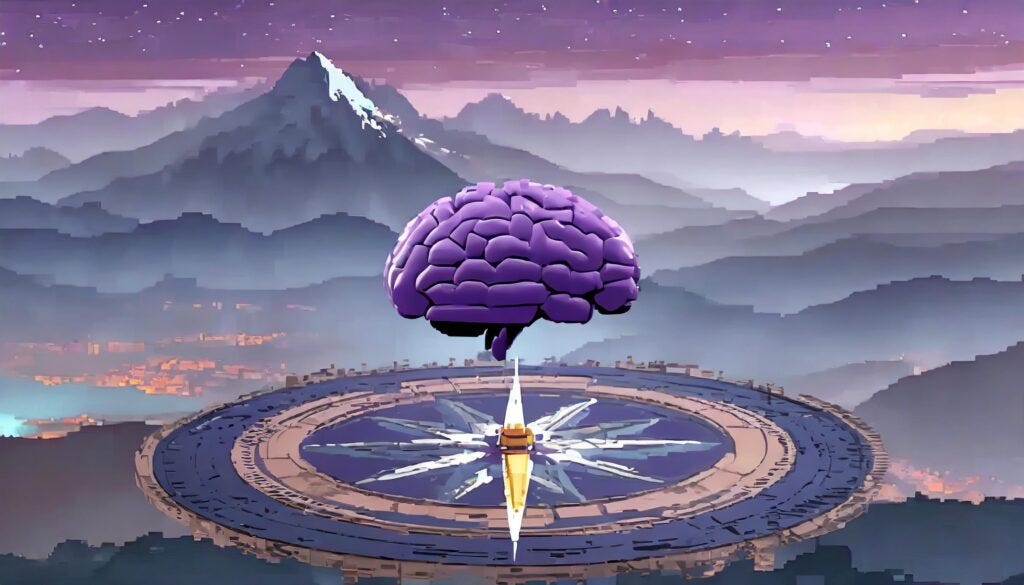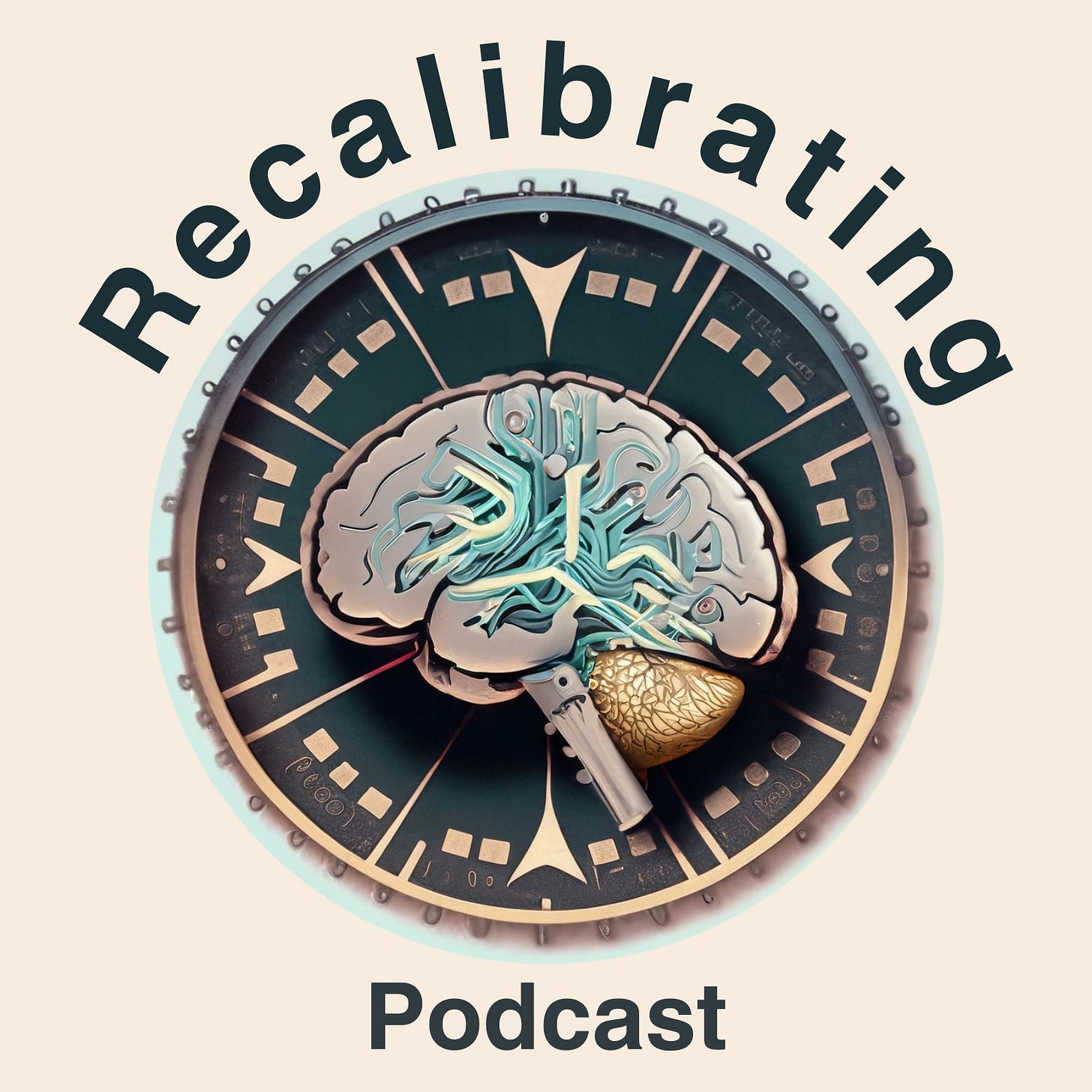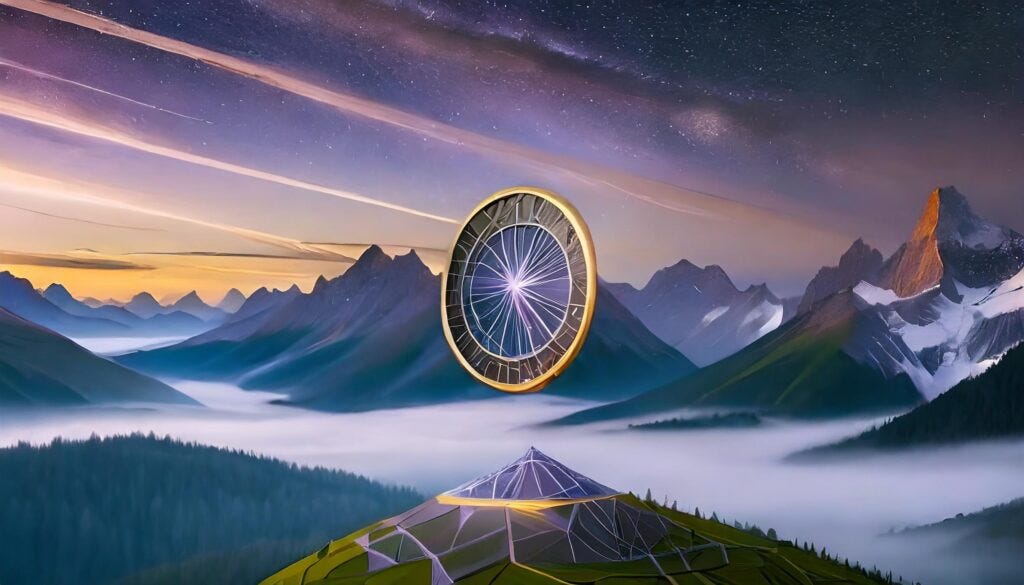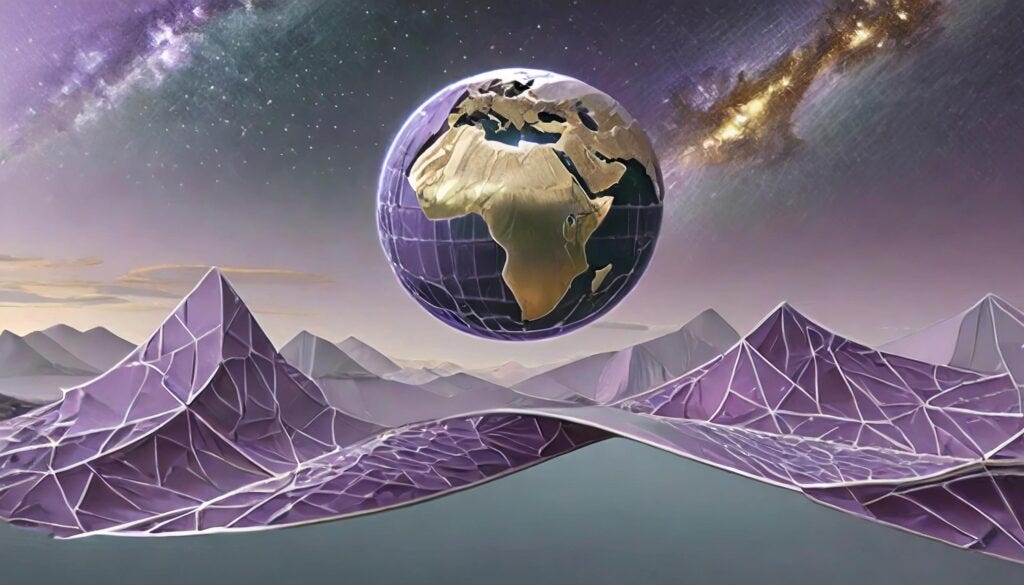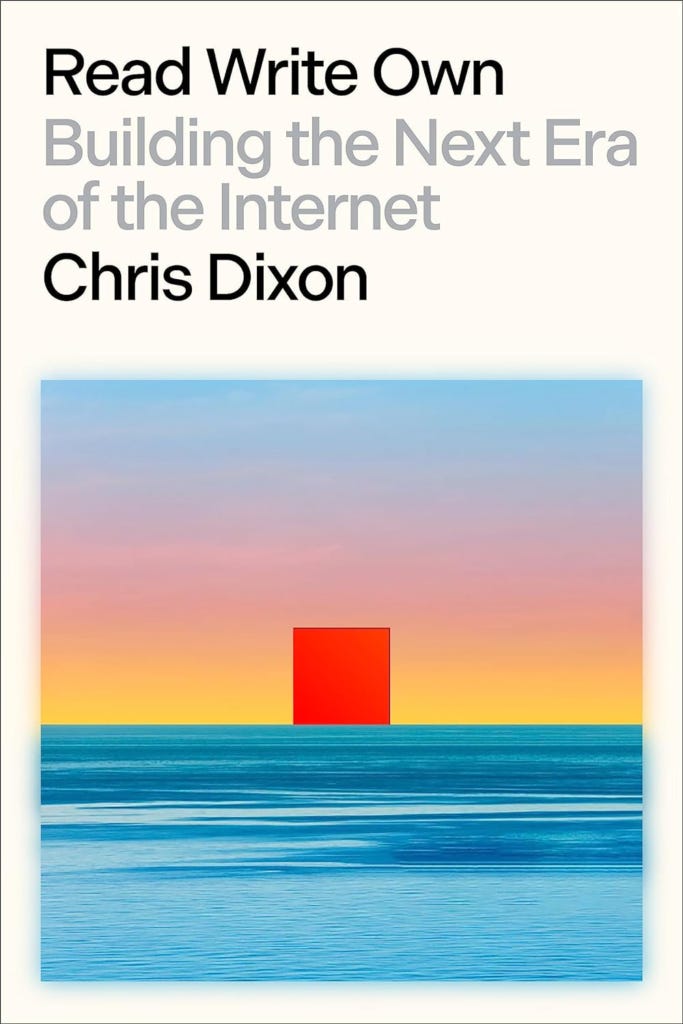
The year is 2024. Here is what the creator economy looks like at the present moment for an average creator:
Part 1: The Creator
A creator, let's call him Cal, finds inspiration to create ✨. He wants to share this creation with others using social media. This creation is a mix of words and images, of art and knowledge - something he thinks others will find valuable. A value packet.
It's not just for others. Cal finds flow in the creation process. The process itself generates intrinsic value - it is cathartic and a good outlet for the many thoughts in his brain.
Cal works for hours writing and editing to craft a value packet, finessing the content until it is ready to be shared (it's not perfect, because perfection is a myth).
Now, Cal has to decide where to share the value packet. Where to "post" the content.
Well, after so many hours of work, he wants to share it everywhere, all at once. Unfortunately, all at once is not possible, and he has to create a separate draft for every single social media platform. So tedious… They all have walled gardens and don't let each other cross-post 😢
Cal presses publish, and the post gets sent to Internet, one of a billion parts of each social media stream of data.
Part 2: The Consumer
Now, this is where you come in. You are the consumer (statistically, 99% of people consume, and 1% of people create).
You receive the posted content (value packet) in your social media feed or email inbox. Now, statistically, you will do nothing. Most people don't engage on social media, they passively consume.
10% of people will engage, clicking like, share, save, follow, or comment to provide feedback (🔥🔥🔥😂). Each of these engagements boosts the post's algorithmic performance, which gets the content into other people's feeds.
The engagement has helped pay it forward.
But, what does Cal get in return for the value he gave you?
In-app data on how the post performed;
word of mouth marketing (when the post is shared with a friend);
if followed/subscribed, an audience that will see future value packets;
brand-awareness;
new friends 😊
Unfortunately, the data is kept within the closed ecosystem of the walled garden and does not contribute to the bigger picture of Cal's value-sharing.
Unfortunately, if Cal linked out to a product related to the post, the social media algorithm has nerfed his performance and almost no one sees it. The post dies 😔.
If the link is in bio/profile (like on Instagram), almost no one will actually go to his profile and click on the link, let alone go to his website to buy the product (< 2%)
How Can Cal Sustain Value Packet Creation?
Cal greatly appreciates the people that consume the content (especially by email 😉), since it's a way to connect with people around the world, making him very grateful for the power of the Internet, helping him tell his story and share value with others.
Cal is even more appreciative of the people who help pay it forward, sharing the content with a friend so he can grow his brand and hopefully monetize more in the future.
But none of these actions gave Cal any money. After all of the hard work done to create value through art, story, and education, the value transfer was a one-way street.
He paid it forward, but no one paid it back 😢.
Over time, this system becomes financially unsustainable and Cal quits sharing value packets with others.
The end.
Not Actually The End
First of all, I want to note that I do truly appreciate any support, whether it's liking, sharing, saving, commenting, or subscribing to this newsletter. There is no obligation whatsoever for anyone to do anything or pay me at all; I like sharing and helping others 😊.
That said, the current social media system (web2) makes it extremely difficult for anyone to pay the creators who sustain their platforms. It's not you, it's not me, it's them.
The nerfing of links means that people on my social media feeds have to leave the platform to subscribe to this newsletter, which almost no one does (I think maybe 5 of you are from Instagram).
Furthermore, my social accounts do not build enough traffic to generate an ad revenue share (though that amount is laughably small: Kara & Nate just had a video get over 50 million views and Instagram paid them $0.01
The social media system we have now is built for advertisers, who care only about massive creators boosting the platform (Reed's Law). It's very hard for new creators to break into the network effect that has led to the successful rise of web2.

Creators burn themselves out trying to share the same content across many platforms to get engagement from people who don't engage, on platforms that stifle their ability to monetize.
The system is built for users of social media to pay the valuable content forward, to build the network effect of the existing platform so they make more money.
The system is not built for creators to get paid back.
It's time we changed that.
Recalibrating Recap
Welcome to Recalibrating! My name is Callum (@_wanderloots)
Join me each week as I learn to better life in every way possible, reflecting and recalibrating along the way to keep from getting too lost.
Thanks for sharing the journey with me ✨
Last week, we touched on the necessity of a cryptographic Internet to deal with deepfakes and the rise of Artificial Intelligence. The week before, we touched on the current failures of social media and why web3 decentralized social media is a solution to many of these problems.
This week, we are going to continue by discussing what it means to sustainably operate in the creator economy and how blockchain technologies provide an easy opportunity for consumers to pay back the creators who provide them with value, while generating micro-network effects.
But first... an announcement!
I have launched The Recalibrating Podcast 🧭✨
I will be starting at the beginning of this newsletter and reading each entry out loud, sharing as a podcast 🎙️
The podcast may be found on Apple, Spotify, Substack, and YouTube (formerly Google Podcasts).
I will be releasing many episodes over the next few weeks as I work through my backlog, so please subscribe to stay up to date ✨
Also: Paragraph.xyz
I announced last week the start of my medium-form writing on Paragraph. I have yet to add everyone’s emails for this shortened content style, but will do that soon (testing out a new organizational idea first 😊).
My goal with Paragraph is to provide short, concise commentary that complements my long-form newsletter. Hopefully this helps distill and understand the more complicated concepts ✨
Note, if you are interested in learning about paragraph, feel free to message me or ask a question in the /cal channel on Farcaster. Also, if you sign up using my link, I get a referral reward, so please consider using it if you are interested in getting into writing 😊 🫡
Now, without further ado:
The Bigger Picture (Why you should care)
I began Recalibrating
as a way to understand burnout and how I could recover from my time as an IP lawyer and patent agent.
I researched how I could recalibrate my creation/value system to be more sustainable. I wanted to be able to leverage my skills as an IP lawyer, patent agent, and artist to educate others on how to avoid burnout while sustainably building up their own value.
Sustainable value generation is a huge issue in the modern world. Almost no one I know is working in a sustainable way. I put out a poll on Instagram asking "who has burnt out before?" and 100% of people said they had (though the other 90% of people who saw the post did not engage 👀).
Let's touch on each of the main problems I've already exemplified in the story above to give more context for the solutions I'll share at the end of this entry.
These are barriers to a sustainable creator economy:
Cross-posting to each platform requires a ton of work, or a paid aggregator service (which is often nerfed by the algorithms);
Very few people engage meaningfully with content, if they do, it's spread across all social platforms (no feedback = no recalibration);
Difficult to directly tip or pay the creator without high platform fees (reduced micro-transaction ability);
Network effect is usually reserved for large creators (small creators can't leverage Reed's Law);
Problem 1: Cross-Posting Burnout
Here's a typical creator economy example: photo or video posting.
When I share a photo online, I have to take the photo, curate the photo from my overall shoot, edit the photo, format the photo for social media, and export it.
Then, I have to write a caption that hooks people to actually read it, so they spend more time diving deeper into the photo I put so much effort into taking and making.
Then, I have to research accounts to tag, with the hopes they will reshare my photo to boost the network effect (more on that below) AND research hashtags that categorize the content for that platform and increase the odds of going viral.
Then, I have to upload the photo, copy and paste my caption and hashtags, manually input each tag on the platform, select music from the platform, and time the music to the video (or add it for a photo).
That’s just 1 platform 😩
I then have to repeat this action for every social media stream:
Instagram
Twitter (X)
Pinterest
Bluesky
YouTube
Reddit
Substack
Threads
Flipboard
LinkedIn
Mastadon
TikTok
Warpcast 👀
What a nightmare. No wonder so many creators burn out, trying to keep up with the rules of posting to each platform, let alone keep up with the algorithm updates.
Wouldn’t it be great to be able to post in one spot and have it go everywhere? 👀
Problem 2: Low-Engagement Ratio (high noise, low signal)
Feedback ⌛️
Once the creator has posted to all of these platforms, it’s time to wait for feedback.
Did the audience like it? Did the algorithm like it? Did it perform well? Did people leave the app to check my website?
Most people do nothing (90%), some people engage (10%), but almost no one provides feedback.
Usually the commentary is 🔥 🔥, or wow! ✨ (nice to see, but not useful for recalibration).
There is a lot of noise in the data, but not a lot of signal.
Part of this is the fault of the creator: it's up to them to invoke a desire for the audience to engage and provide the feedback/call to action that they are looking for (aka marketing).
But, in my opinion, the bigger issue is that the platforms have devalued engagement. We have been trained to give away free things like "likes", because it takes almost no attention or thought to do so.
Meaningful comments take more time, attention, and energy, which means most people don’t make them.
I get it, everyone is busy and goes on social media for a break from thinking. But this makes it hard for creators to build in a way that gives higher impact value back to their audience. There's a give and a take in order to have a synergistic system.
Furthermore, most platforms have extremely low conversion rates: AKA people don’t leave the social platform to go to the creator's website where they can engage more meaningfully and perhaps purchase something to support them.
Problem 3: Poor Payment Rails (low/no in-app payment options)
😢 😢 😢
The Apple App Store takes a 30% cut from all payments made in app. Social media platforms take another cut.
Creators will make a few cents on a post if they’re lucky. For example, on Instagram, you can now give out stars in reels. They are worth one cent...
Even monetization platforms, like Patreon take up to a 10% cut of all revenue (sometimes more depending on the platform).
Other platforms, like X, offer an ad revenue share for creators, which can pay out hundreds of dollars a month, but only for creators that have massive engagement (millions of views).
It is difficult, if not impossible, to directly pay a creator (as a sign of your appreciation for the value they are creating) without having fees siphoned by mega corporations.
Even Substack Takes a 10% cut of all monetization. That means that for my monthly paying subscribers (all seven of you 🫡 ) I still lose 10%.
That may not be a big deal for large creators, making $1000s or $10,000+ a month, but for small time creators, especially those who quit their job to create full-time, a 10% decrease in income is a big deal.
Additionally, most revenue options are subscription-based, requiring a monthly payment rather than a per post payment (making it less accessible to one-off micro-transactions, though I think the monthly model actually makes the most sense in the long run).
But wouldn’t it be nice to directly tip a creator as a sign of your appreciation if you resonate with a particular post? The tip could be anywhere from $0.10 to $10.
Problem 4: Low/No Network Effect
If a Tree Falls in the Forest, and There’s No One Around to Hear It, Does It Make a Sound 🤔?
Most creators make all of their money through brand partnerships and sponsored content. But there’s a problem.
These partnerships are often reserved for the biggest creators. While there has been a rise of paid micro influencers, it still takes 5,000 to 10,000+ followers to actually get the attention of a brand.
This threshold makes it difficult for small creators to make money early on (when they need it most).
Additionally, it’s hard to get your posts seen without the network effect of an existing audience. The algorithm on each platform has to be trained to understand how to promote your content properly.
This learning curve delays algorithmic boosting, which means it takes a long time for creators to hit 10k followers on, eg, Instagram (unless they go viral, but that’s like a strategic lottery and can't be counted on with certainty).
Even then, the conversion of audiences on most platforms is almost 0%, so the audience itself does not meaningfully contribute to the creator’s monetization journey.
They must rely on brands to pay them, which often requires making content they don’t fully endorse - likely the whole reason they stepped into the creator economy in the first place.
There has to be a better way, one where the number of followers matters less than the depth of engagement with those followers.
We need a better system to identity and build True Fans and True Community.
Solutions Overview:
RSS & Simultaneous Omni-Channel Distribution
RSS+ upgrade (Social Graph Engagement Aggregator)
Revenue Share & Blockchain Payment Rails (micro and macro transactions)
Micro-Network Effects With True Fans & True Communities
1 RSS & Simultaneous Omni-Channel Distribution
A solution to the first issue of creator burnout via distribution time costs already exists. The technology was invented in the early 2000’s: RSS.
RSS stands for really simple syndication. Effectively, you could subscribe to an RSS feed that is put out by a creator online (e.g., a blog) and you would receive each new blog post to directly to your RSS reader.
Not to go too deep into the history of why RSS failed, but TL;DR, Twitter and Google killed it. Twitter originally allowed RSS feed distribution, which meant that new blog posts were received by your Twitter followers.
Twitter enabled a social system to tie to the RSS feed, helping the discoverability of the creator by plugging into its social graph. But, Twitter pulled its API access and the RSS feed died.
However, one place RSS feeds have survived is through podcasts. For example, I uploaded my first Recalibrating Podcast episode to Substack (my host) and pushed it though my RSS feed. This instantly distributed to Apple, Spotify, YouTube, and Substack.
I created one piece of content, and it was distributed instantly to 3 other channels.
Wouldn’t it be great if all social media allowed this? I could post once to my website and push it to all social platforms. Everywhere, all at once.
Unfortunately, the walled gardens of the mega corporations did not allow this.
So, RSS lost. It failed to become mainstream. It didn’t have the social network to keep it going.
It had no way to tap into the network effects of web2.
It was missing something extra: its own social graph.
2 Social Graph Engagement Aggregator (RSS+)
The original name of Farcaster was RSS+
According to Dan Romero, one of the co-founders, the “+” came from introducing a social graph in a manner that allowed for identity verification across the RSS distribution.
Blockchain is the +
For more details on Farcaster and Warpcast, I gave a full explanation in entry #34: A Change In The Paradigm of Social Media.
Now, the powerful part of this system isn’t just with creators being able to distribute their casts to the entire network (though that helps with burnout, they only have to cast once), the powerful part is that the consumer can also verifiably interact (i.e., engage) with the cast, and engagement is logged in the network.
Hypothetical Analogy: Headless Marketplace
A web2 analogy: our friend, Creator Cal, shares a post on his website, including: image, caption, tags, hashtags.
Assume all web2 social media accounts are allowed to automatically post between each other: the image, caption, tags, and hashtags are bundled into a packet and distributed through an RSS feed to:
Instagram, Twitter, Facebook, Threads, Reddit, Pinterest, Flipboard, YouTube, Bluesky, Mastadon, new social media x, new social media y...
Cal only had to post once, but his audience could receive the post via whichever “market” they wanted to. A headless marketplace, with no single controller.
Now, Person A views the photo on Instagram and likes it enough to leave a comment.
Person B views the photo on Twitter, and also leaves a comment.
Since Person A and Person B are both on the same social graph (Farcaster protocol) and can verify their identities with blockchain, the social graph approves their comments and sends them to Cal’s website.
When Cal checks the post on his website, he can see that the comments from both person A and person B beneath the web post.
The engagement has been aggregated, making it easy for Cal to respond to each person from a single control centre (his website aka his world).
3 Revenue Share & Blockchain Payments (micro and macro)
Revenue Sharing (marketing perks): Pay it Forward
Now, let’s say that you really loved Cal’s post, enough to reshare it with your own network.
Since you are connected to the same social graph via blockchain authentication, the sharing of the post gets tagged with your unique digital identifier.
Person C sees your repost and likes the post enough to go to my website and buy a print of the photo.
Since this is all done on the same authenticated social graph, I get a notification telling me that you helped me market my work by reposting and resulted in a sale.
As a thank you for helping me make the sale, you get a commission (e.g., 5% of the revenue). Since the social graph is on blockchain, it has access to crypto payments (cryptographic monetary rails). Accordingly, I can instantly and automatically give you your 5% cut.
There’s no need to connect a bank or credit card, it all gets routed through your blockchain authenticated identity (the power of building on an identity-verified economic foundation).
Micro-Transactions: Pay It Back
Now, some of my prints are $50-$400 (depending on the material and size). This price range is not accessible for everyone, which means it will be difficult for you to get consistent commission for sharing my work this way (though not impossible).
An easier way to make a sale is to reduce the cost of the good. Physical products have physical costs. Digital products are infinitely replicable and cost almost nothing to produce. More on this in #32: Digital Identity and Intangible Value.
With the lower cost of production of digital goods, they can be sold for cheaper (or given away for free).
Instead of $50 for a print, think more in the range of $1-$5 for a digital copy of the image.
Sure, a 5% commission on $1 is not much ($0.05), but if you help the creator sell 1000 of them, it’s still $50. Remember, in this case “helping sell” is pressing retweet or repost. That’s it. Effortless.
NFTs (Non-Fungible Tokens)
Still, to convert someone into making a sale by having them go to your website, it’s easy for them to get distracted and “drop-off”.
For digital goods, it would be better to be able to purchase them in the social feed where the user already is.
This is where NFTs come in. An NFT is effectively a digital certificate of authenticity that you can own (see intro to web3 & NFTs for more information).
Since the social graph is tied by blockchain to your identity, if you purchase a digital asset on blockchain, the good can be immediately given to you in a way that is instantly verified.
Creating an NFT is done by “minting”. As I talked about in #34, the in-app purchase function of one click buying was added to Farcaster and Warpcast.
In other words, the value packet that Cal shared could come with an instant buy button, for $1-$5 (or whatever you want). When you share the value packet and someone buys it in their feed (as if Instagram operates like Instagram + Amazon), Cal makes a small amount and you get a small commission.
Over time, these micro-transactions add up, Cal doesn’t have to quit creating, and you earn money for helping Cal build his audience and make sales. Sounds sustainable to me.
Cal is happy, you’re happy, the consumer is happy.
Win win win.
RSS+
4 Micro-Network Effects
Augment & Amplify The Feedback Signals 📊
As Cal builds up his audience and generates more and more micro-transactions, he begins to get a better sense of what people value in his creations (via feedback and transaction data).
The time will come where Cal has an idea for a bigger project. Something that will take even more time to build than writing a newsletter or posting a photo each week.
The micro-transactions were helpful to keep him going, but he’s ready to level up.
With the thousands of micro-transactions, Cal now has a small community around him, people that have shown belief in him enough to buy something from him (if even for $1).
His 1000 true fans (or ideally, 10,000 micro-true fans).
But he’s looking for something bigger now. Something that he can go into full-time and have it be worth his time.
Time = money.
Cal launches a project with a higher entry cost, maybe $500. His community of micro-marketers helps him promote this new project (still with the potential for that 5% commission, now $25 each).
Due to the combined effort of his fans and the micro-network Cal built, he’s able to find 100 people to pay him his $500, earning $50,000, enough to sustain him for the year without having to do other work.
There is a micro-network effect that enabling him to find his 100 true fans, while continuing to help his 1000 true fans earn commission.
Instead of trying to get a true network effect, of going viral on social media (like web2) with thousands of meaningless engagements, there is a deeper connection with a True Community that brings everyone up together.
Future-Proofing & Looking Ahead (predictions)
Let’s recap:
By leveraging an RSS style feed, creators can post in a single location (their website) and immediately distribute reformatted content across all social platforms (this is what Worldbuilding is about).
By introducing blockchain, the RSS feed is upgraded to RSS+, adding a social graph and payment rails.
By adding a social graph and payment rails, creators can be instantaneously paid, can keep track of engagement in one location, and can reward their fans for conversion (making sales, increasing subscribers, whatever the creator is looking to do).
By rewarding fans for helping them market (resharing content), a community is built with a shared interest in seeing the creator succeed. A True Community.
This True Community can generate a micro-network effect, helping scale whatever project it is the creator is looking to build when they are ready to go bigger.
A synergistic & sustainable creator economy.
Now, this system is currently in the process of being built through Farcaster. There are many moving pieces that are constantly being innovated and updated, so the specifics may change over the next few months.
However, the only way this system will succeed is if there is an actual network effect generated that can make it sustainable.
This system succeeds if you believe in it.
This system succeeds if you build it.
Are you ready?
Next Week
I'm currently in the process of rethinking everything I know about the creator economy. I'll continue updating you with my understanding of how I think creators can sustainably build in this rapidly-changing world. An interesting thing I learned this week is how hypersub works (built by Fabric 👀). I’ll let you know when I know more.
In the meantime, I will be sharing my next Paragraph entry soon, now that I have sorted out my distribution organization (you'll see soon). I will also be recording more podcast episodes and distributing them everywhere, all at once, via my RSS feed 🎙️.
Stay tuned ✨
P.S. If you are interested in learning how I build my digital mind (second brain) to help me process information and identify patterns to solve my problems, please consider upgrading your subscription to paid. Your support means more than you know 😌 ✨
Paid subscribers get full access to Worldbuilding, a practical counterpoint to the theories described in Recalibrating. You also get access to a private chat and bonus explanations exclusive to paying members 👀
If you are not interested in a paid subscription but would like to show your support, please consider buying me a coffee to help keep my energy levels up as I write more ☕️ 📝
Book of the week: Read Write Own by Chris Dixon
I'm about 1/3 done this book and have to say that it is one of the best books I have ever read on the topic of emerging technologies and the attention economy. If you're interested in any aspect of today's newsletter, I highly recommend checking out this book.
Photo of the week: The Blue Supermoon (2023)
